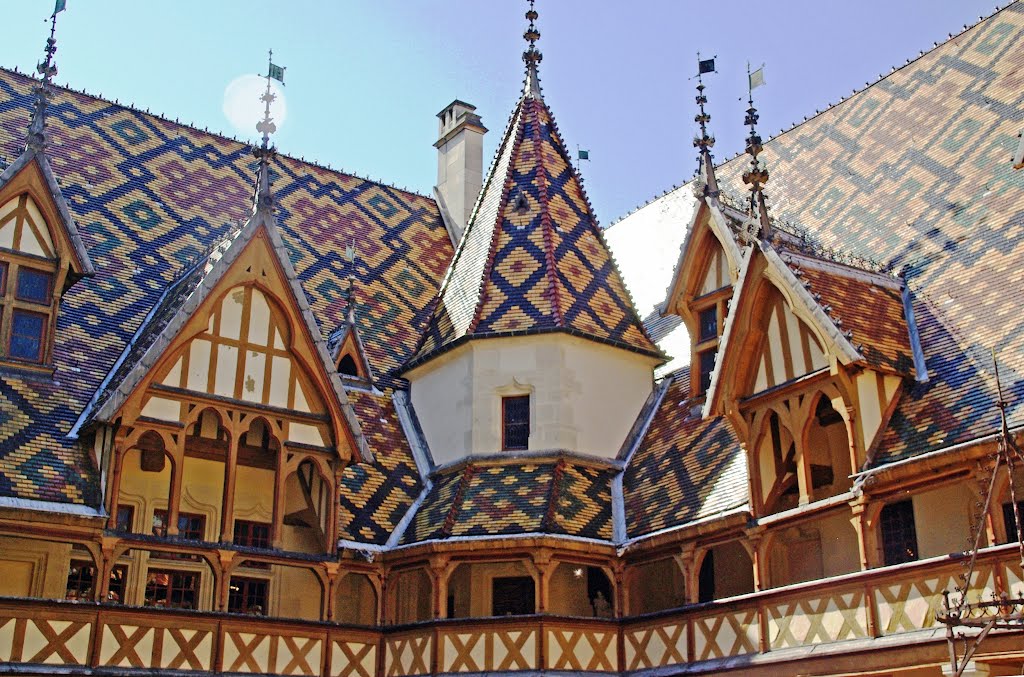#5969. Patterned Facade of Hôtel-Dieu: Burgundian Gothic with Polychrome Tiled Roof
The image showcases a magnificent example of Burgundian architecture, presumably the Hôtel-Dieu in Beaune, France. This is an outstanding specimen of medieval hospital architecture from the 15th century, featuring characteristic elements of late Gothic and early French Renaissance styles.
The building's facade displays a complex composition of wooden structures in half-timbered style, where dark wooden beams contrast with light plastered surfaces. Particularly noteworthy is the roof—a true work of art made of glazed tiles forming a geometric diamond pattern in blue and terracotta colors. This is a distinctive feature of the Burgundian architectural tradition.
The central focus is drawn to an octagonal turret with a pointed roof, which serves as the architectural dominant of the composition. On the sides are gables with wooden frame structures, characteristic of medieval European architecture. The decorative elements of the roof are complemented by metal weathervanes and spires, which give the building's silhouette a picturesque expressiveness.
The gallery of the lower tier with its arcade and cross-shaped wooden elements creates a rhythmic articulation of the facade and demonstrates the craftsmanship of medieval builders. This combination of functionality and decorative expressiveness is a distinctive feature of this architectural monument.
